Recommended Posts
skymama 35
QuoteCheck altitude again, yell altitude to other jumper and see if they are conscious and okay. (They may not be able to respond, may have line around their neck, and my leaving will help that, too!) Tell them clearly that I am going to cut away.
So what do you do if you have a full-face helmet on and they wouldn't be able to hear you?
because she will lay some keepdown on you faster than, well, really fast. ~Billvon
NWFlyer 2
QuotePS. Have we missed something in training new people in this sport about what can happen even if you open up a nicely flying canopy? It seems that there is a lack of "What if" training.
As a relative noob who can still remember my initial training pretty well, I think "Yes." When the actual incident upon which Lisa is basing her hypothetical happened, I actually did a search on "collision" in the SIM to refresh my memory on what was included in there (assuming that it's a decent proxy for "what's trained"). Personally, I can't remember learning much more than what's in the FJC part of the SIM (excerpted below), at least not in formal training.
Collision avoidance gets mentioned in several places in the ISP outline, which is good. But there's not much on what to do if you end up having a collision anyway.
Perhaps an appropriate level of detail for the FJC; but then ... is it covered elsewhere? It is, but it's in the "advanced" sections that, frankly, many people probably only review if/when they're going for an advanced license. Hell, I took the D license exam the day before the incident at the American Boogie and didn't review the CRW section (and missed the one question about that on the test, of course.)
I sure reviewed it when I got home.
From the Category A (FJC) training:
Quote3. Canopy collision:
a. Jumpers must avoid collisions with other jumpers
under open parachutes.
b. If a collision is imminent, in most cases both
jumpers should steer to the right.
c. If two jumpers collide and entangle, they must
communicate their intentions before taking
further action.
d. If it is too low for a safe cutaway (below 1,000
feet) and the canopies are uncontrollable, both
jumpers should deploy their reserves.
From Section 5-1 (Skydiving Emergencies):
QuoteH. Canopy collisions
1. The best way to avoid a collision is to know where
other canopies are at all times.
2. If approaching a jumper head on, both canopies
should steer to the right.
3. If a collision is inevitable:
a. Protect your face and operation handles.
b. Spread your legs to avoid going between lines.
c. Check altitude with respect to the minimum
cutaway decision and execution altitude
recommended for your experience.
d. Communicate before taking action:
(1) The jumper above can strike the jumper
below during a cutaway unless one or both
are clear or ready to fend off.
(2) The jumper below can worsen the situation
for the jumper above by cutting away before
he or she is ready.
(3) If both jumpers are cutting away and altitude
permits, the second jumper should wait until
the first jumper clears the area below.
(4) The first jumper should fly from underneath
in a straight line after opening.
(5) At some point below a safe cutaway altitude
(1,000 feet), it may become necessary to
deploy one or both reserves (may not be a
safe option with an SOS system).
(6) If both jumpers are suspended under one flying
canopy at a low altitude, it may become
necessary to land with only that canopy.
In the section on RSLs, RSLs are mentioned as a complicating factor in cutaways from canopy collisons.
And of course, Section 6-6 on CRW gets into quite a bit of detail. The most specific "what to do" instructions fall in paragraph F:
QuoteF. Emergency procedures:
1. Entanglements are the greatest hazards when building
canopy formations.
2. Jumpers should know their altitude at all times,
because altitude will often dictate the course of action.
3. If a collision is imminent:
a. The jumpers should spread one arm and both legs
as wide as possible to reduce the possibility of
penetrating the suspension lines.
b. The other hand is used to protect the
reserve ripcord.
4. Jumpers should be specific in discussing
their intentions.
5. If altitude allows, emergency procedures should proceed
only after acknowledgment by other jumper(s).
6. In the event of multiple cutaways and if altitude
allows, jumpers should stagger reserve openings to
avoid possible canopy collisions.
7. Respond to the given situation.
a. When entanglements occur, jumpers must be
prepared to react quickly and creatively.
b. In many cases, the emergency is one that can’t be
prepared for in advance; it may even be a problem
no one imagined could happen.
8. If the entanglement occurs with sufficient altitude,
the jumpers should attempt to clear the entanglement
by following lines out before initiating emergency
procedures.
9. Jumpers should try to land together following a canopy
relative work emergency.
Quote[An entanglement scenario usually results when one jumper passes through the lines of the other jumper. Both jumpers may have to cut away and pull their reserves. The top person cuts away first so that the line recoil does not wrap the other jumper. It is possible that the cutaway canopy may free itself from the lower jumper's canopy. If an entanglement is spinning, then the higher, spinner jumper should cutaway first.
I'm not sure I agree with this.
If one of the entangled jumpers is clear and has the opportunity to remove themselves from the situation, I think they should. If one is already entangled, then it really can't get much worse, but getting half the load off the flying canopy as soon as possible can only improve the odds. Also, if the top jumper is entangled he/she may not be able to move, breath, cutaway anything until the weight is off the entangling lines. Also, I could see an unentangled jumper riding in one with someone who is entangled just because he thought it was the thing to do, rather than save him/herself. Man, just thinking of all that HMA or someother cheesecutter line around me (or through) makes me shudder!
MakeItHappen, can you convince me otherwise? Not wanting to start a brawl here, just want to learn more.
Make the motion (cutaway motion) with your arm a couple of times. Odds are they want you gone....NOW!
top
skybytch 259
QuotePS. Have we missed something in training new people in this sport about what can happen even if you open up a nicely flying canopy? It seems that there is a lack of "What if" training.
You see right through me.
The ISP suggests that new jumpers review section 5.1 of the SIM (what Krisanne posted) during Category G. I wonder how many new jumpers actually do so. We focus a lot on collision avoidance, which is great, but are we doing so at the expense of teaching people how to survive a canopy collision?
I'd love to hear input from some low jump number (say sub-200) folks on this subject. How much of the information here did you know before you opened this thread? If you already knew it, at what point was it taught to you or did you have to seek the information out yourself?
rlucus 0
Quotedisconnect my RSL, cutaway holding one riser, try to drag it off of him
I didn't see the smiley face next to your post indicating this was a joke. You're kidding right?
What makes you think that you hanging on to one riser will drag the mess off of the guy, when you hanging by both (before you cutaway) did not?
Aside from being a waste of time, something neither of you have the luxury of, you trying to hang you full weight off of one riser will only to serve to tighten the grip that those lines have on the jumpers body and equipment. Do yourself, and them, a favor by removing yourself quickly and completely from the situation.
You may have a simple cutaway and reserve deployment, but the other jumper has a main canopy wrapped around them, and needs to establishh control over their own main canopy, or clear enough of the mess to allow operation of their cutaway and reserve system. You playing tarzan with one of your risers will not contribute to that situation.
MakeItHappen 15
QuoteQuote[An entanglement scenario usually results when one jumper passes through the lines of the other jumper. Both jumpers may have to cut away and pull their reserves. The top person cuts away first so that the line recoil does not wrap the other jumper. It is possible that the cutaway canopy may free itself from the lower jumper's canopy. If an entanglement is spinning, then the higher, spinner jumper should cutaway first.
I'm not sure I agree with this.
If one of the entangled jumpers is clear and has the opportunity to remove themselves from the situation, I think they should. If one is already entangled, then it really can't get much worse, but getting half the load off the flying canopy as soon as possible can only improve the odds. Also, if the top jumper is entangled he/she may not be able to move, breath, cutaway anything until the weight is off the entangling lines. Also, I could see an unentangled jumper riding in one with someone who is entangled just because he thought it was the thing to do, rather than save him/herself. Man, just thinking of all that HMA or someother cheesecutter line around me (or through) makes me shudder!
MakeItHappen, can you convince me otherwise? Not wanting to start a brawl here, just want to learn more.
It came from this article
http://web.archive.org/web/20070701115244/http://crwdog.servebeer.com/CRWdog/CRW+Emergency+Procedures.html
.
Make It Happen
Parachute History
DiveMaker
Quote
I'd love to hear input from some low jump number (say sub-200) folks on this subject. How much of the information here did you know before you opened this thread? If you already knew it, at what point was it taught to you or did you have to seek the information out yourself?
I was only taught about what to do during a relatively simple canopy entanglement (that is if canopy collisions could ever be considered simple in my new skydiver mind) depending on altitude. This was during ground school, less than a year ago.
When topdocker said hearing "I couldn't imagine that happening!!" is never one of those things you want to hear, you can trust that I'm one of those people that didnt think of a spinning malfunction sending me into someone elses canopy and not being able to see my altimeter. I will def be asking more about this when I get to my DZ next weekend.
I've been in wraps, but, have never experienced an entanglement?? Shit happens quickley! My best advice is to keep cool, communicate with everyone involved as best you can, identify the situation and deal with it.
Next time a CReW camp comes to your home DZ, you might want to sit in on the classroom portion at least. Seems to me that CReW training is where we teach this stuff.
That being said, I would definately agree with Top that todays flying skin strippers scare the bageebees out of me. ![]()
![]()
"Son, only two things fall from the sky."
Baksteen 84
QuoteScenario #2 - You have a spinning malfunction. As you start your 2nd 360, your body hits the open canopy of another jumper.
Whatcha gonna do?
Always (try to) communicate (altitude permitting)
Always use positive commands.
Always disconnect RSL (I don't have one, but the other person might). A too-quick reserve activation increases the chance of the problem recurring - this time with a reserve mixed into the other pile of crap we're dealing with.
In this scenario I might full well have a faceful of canopy and my canopy isn't flying right in the first place, so an entanglement is much more likely than a wrap.
Should we find ourselves in an entanglement, then theoretically the top person (in this case, me) should cut away first.
If I'm totally wrapped up in the other jumpers canopy instead of having 'bounced off' and falling through their lines AND if the other jumper is not entangled in MY canopy, they should cutaway first as if it was a 'normal' wrap - the reduced tension on their canopy will give me a better chance of clearing the fabric off myself.
However, my canopy isn't flying right and was already spinning when I hit the other canopy.
In a spinning entanglement, the person 'on the outside of the spin' (can't find the right words) should cut away first - the reasoning behind this as I understood it is that they are flung clear of the entanglement by the centrifugal forces.
Most importantly, always be aware of your altitude!
~mom
skybytch 259
Quoteyou can trust that I'm one of those people that didnt think of a spinning malfunction sending me into someone elses canopy and not being able to see my altimeter. I will def be asking more about this when I get to my DZ next weekend.
That's exactly what I was hoping for when I posted this thread.
QuoteSeems to me that CReW training is where we teach this stuff.
Me too. imho, we need to start making a point of teaching it to everyone, not only to those who want to do some CRW.
QuoteCheck altitude again, yell altitude to other jumper and see if they are conscious and okay. (They may not be able to respond, may have line around their neck, and my leaving will help that, too!) Tell them clearly that I am going to cut away. Check handles, check for traffic underneath and around my intended area of frefall. Cut away, making sure to fall flat stable and away from my gear (no riser hangup). Put my cutaway handle in my teeth so I don't drop it. Pull my reserve handle. Thank god for a good reserve and wonder what dipstick hit me. Find safe landing area and steer clear of more dipsticks.
Tell everyone back in the hanger, "No %^%&! There I was..."
How'd I do?
Not bad, but what happened to the top person being in control?
If they are unresponsive, I'd agree with you totally.
If they're responsive and alert, they may not have been trained in CRW EPs and probably are an idiot for running into a canopy that was directly in their line of sight, but before you unilaterally decide to cut away, you might want to check what they're doing. They may be attempting to clear the wrap and cutting away may well make matters worse for them.
I have plenty of experience with wraps and entanglements, most at an altitude where we could deal with them. You would be amazed at how quickly you will lose altitude while you are focused on a problem (getting line off your altimeter, for example), and those two canopies (or three or four) are just eating each other up, and your distance from the earth. And the weight and strain on your body if you are holding everything up is immense, compounded by any spin induced by uneven loading. It's way easier to deal with an unloaded main, than a loaded one.
Lastly, I'm not sure I agree with Mike Lewis's article MakeitHappen referenced. CRW lines are not HMA or some other small diameter tissue remover, sticking out your arms and legs out in a head on collision may get them torn off. I'd say cover up and close up, hope you come out the other side, then just the deal with it. Trying to not enter the lines by sticking out an arm may earn you the nickname "Lefty." Remember, Mike was referencing CRW wraps and entanglements, not much ones occuring lower and with faster canopies.
Pack better, track better, and open a little higher. The life you save may be mine!
top





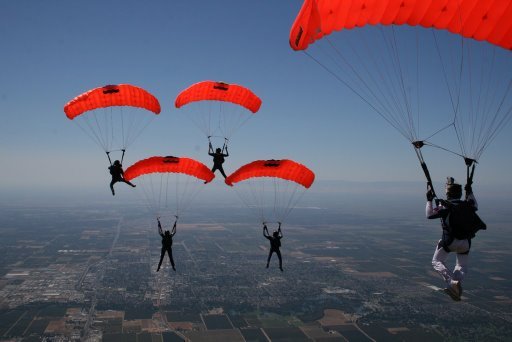
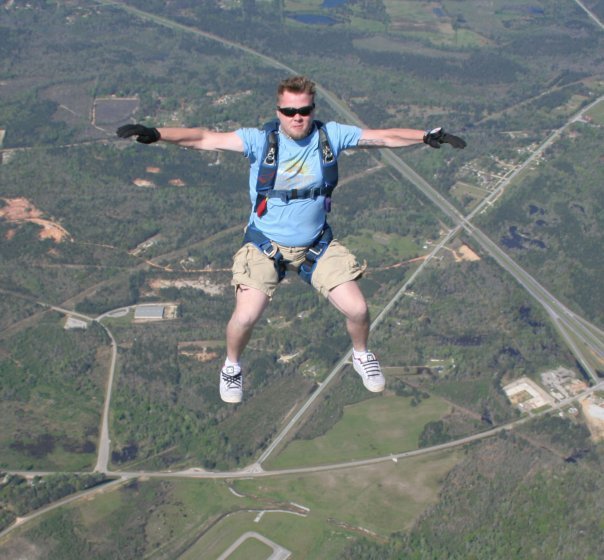
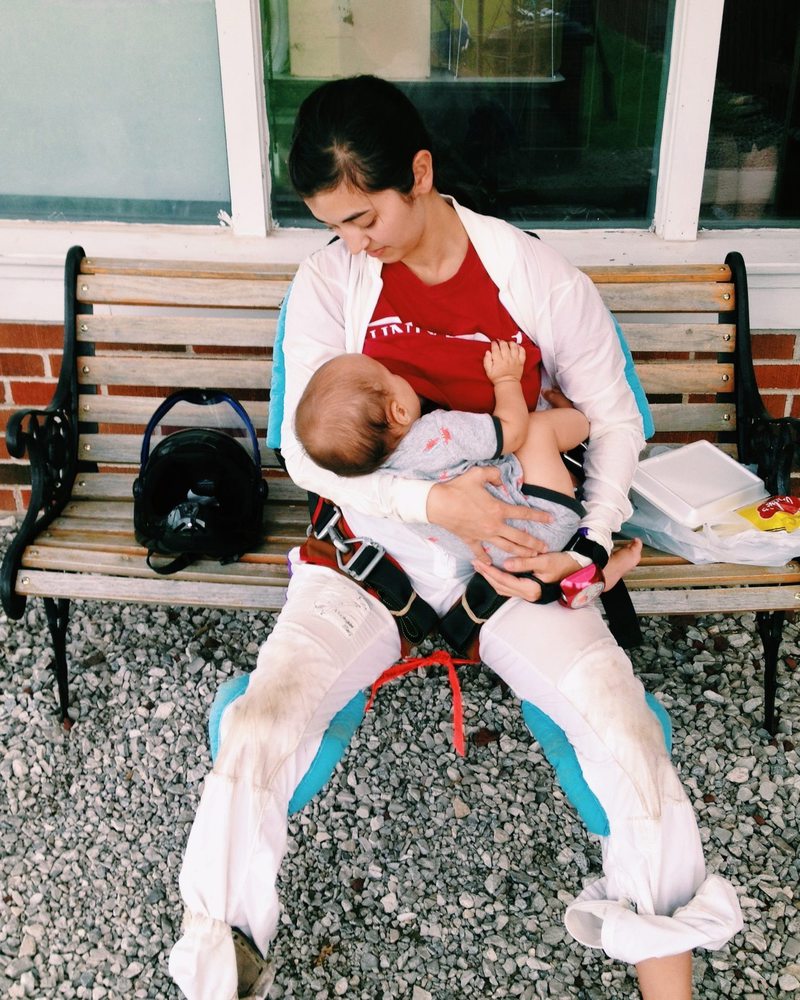
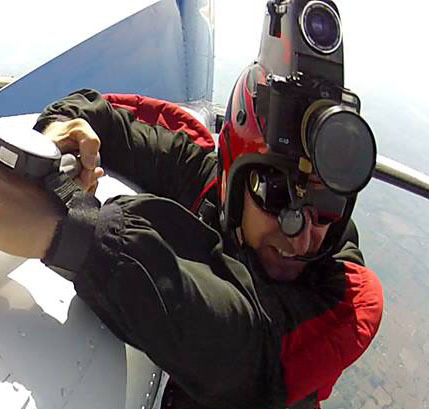
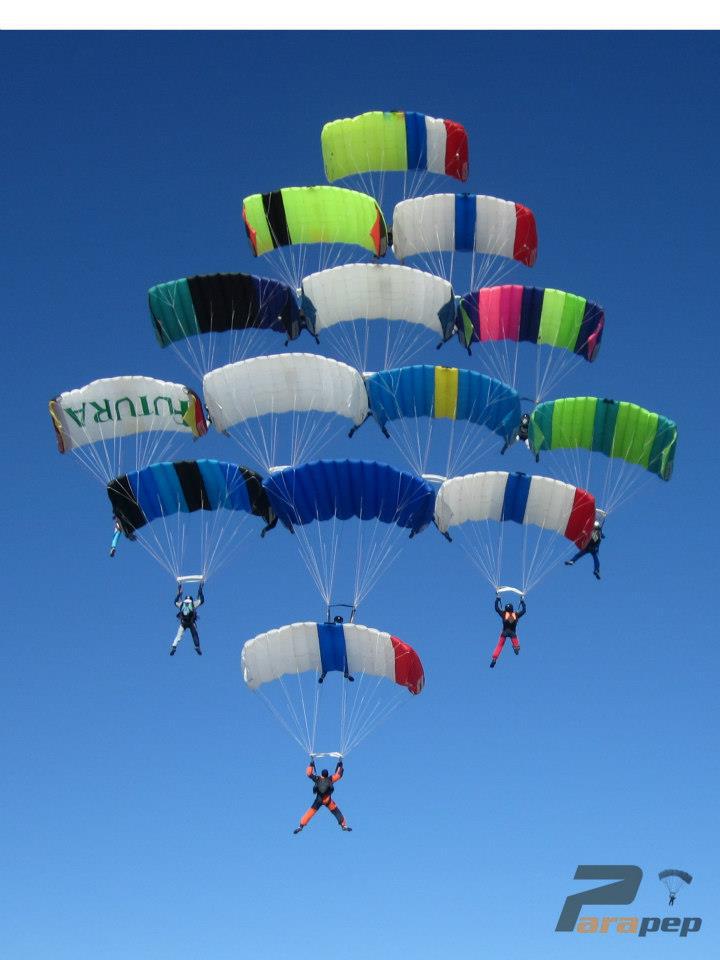
uhmmm, if this happened in real life you might not have 'all the facts'
What would you do then?
Let's say that the canopy you collided with obstructs your view of your altimeter.
or How about the lines from the other canopy dump your reserve
.
Make It Happen
Parachute History
DiveMaker
Share this post
Link to post
Share on other sites